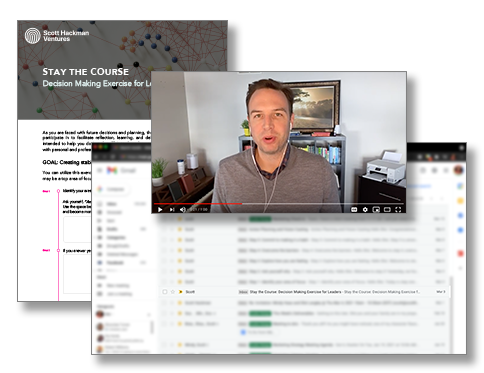As a leader, practicing active listening is inevitably a part of your daily responsibility. As you manage a team, this role could quite possibly be named one of the most important.
Gaining Perspective
While it’s an important skill-set to develop, it can often feel overwhelming and out of reach for a lot of individuals. In an effort to bring it down to a more attainable level, we believe in viewing active listening as a form of gaining perspective. If you approach active listening as a means of understanding perspectives, it begins to feel more achievable.
Building Trust
A leader will commit to listening and understanding others by stepping into the conflict and chaos in order to bring people together and facilitating common ground decision making. They will go through the discomfort of not knowing the outcome, however, they are aware that through those actions and hard conversations, there will be mistakes and flaws that will be learned from. As these conversations continue to happen, there will naturally be more trust built so that the conflict begins to move towards clarity, confidence, and more healthy and effective communication throughout the organization.
Putting it into Practice
Active listening is about being engaged, fully aware, and fully present with the individual(s) in the room. This is marked by the ability to hear the words, notice body language, rename/restate what you hear, and stay engaged even when you notice discomfort within yourself or others.
When putting active listening into practice, you’re offering a presence and a willingness to stay fully-present long enough to bridge the gaps and make connection to what you’re hearing and as a result next steps and commitments are made.
Often we listen with the motive of, how is what’s being shared impacting me? When engaged in active listening, we stay engaged, open and curious, noticing our natural response and asking how is what’s being shared impacting them?
According to Cynthia Moore-Hollinshed, a respected colleague of ours as well as a leadership coach and teacher, “Active listening is a skillset that must be developed, honed, and practiced.”
She offers 4 steps to help put your active-listening into practice:
1.) Be Present—We must take the time to be fully present with a person. If there is something pressing on your mind preventing this, ask if you may have the conversation later. Cynthia suggests, “I’m sorry. I want to give you my full attention and right now I am unable to. When might be a better time for us to talk?”.
2.) Listen to Understand—Listening to understand is truly a better skillset to attain than listening to simply respond. To start, it’s helpful to know what the person wants from the conversation. Do they want you to help with planning or problem-solving? Or, do they want you to listen and help them reflect? If you’re not sure, ask them!
3.) Summarize for Clarity—Repeat what you think you heard and allow the other person to correct or confirm it. Ask to learn more about their feelings regarding specific topics. It can often help to acknowledge what you’re hearing as values. Name those values and ask the question of how they will remain committed to what they have named.
Give them Space—Protect space for people to reflect and gather their thoughts. Instead of filling the silence, pause. By pausing you’re waiting to see if what you’re saying back to them is resonating and as a result, you’re strengthening the relationship.
Some things to consider when exercising the muscle of effective active listening:
● Withhold judgement— When engaging in active listening, it’s important to approach the conversation with an open mind. Even when active listeners have strong views, they suspend judgment, hold criticism, and avoid arguing or selling their point right away. You may consider asking for permission to critique what you heard, however, if a person isn’t interested in your opinion this could lead to unnecessary conflict.
● Explore their solutions first—Once you have completed the steps above and you’re entering the problem solving or solution portion of the conversation, encourage the individual you’re speaking with to offer ideas and solutions before you give yours. For example, lead by asking powerful questions like, “How do you see this being resolved?” “What’s most important to you in this process?”
● Share—This is often the final portion of the conversation. Once the situation has been talked through and you both have a better idea of the desired outcome, you can then offer some of your personal perspective. A great illustration of this is recalling a portion of the conversation where they shared something that you can relate to. Use the language of feelings to make connection. “I’ve felt frustrated/hurt/scared/sad when up against that.” Circle back around and share your feelings accurately and with specifics. This will help them feel heard and also encourage future communication because you’re making yourself open and relatable.
As a leader by simply committing to active listening with your team members, you’re able to begin building trust within your organization. These individuals are looking to you to lead the hard conversations to break down barriers and build healthier communication.


Scott Hackman is the Founder and CVO of Scott Hackman Ventures. He has over 15 years of experience in business advising, coaching, and leading growth through transitions.
Meet Scott.



